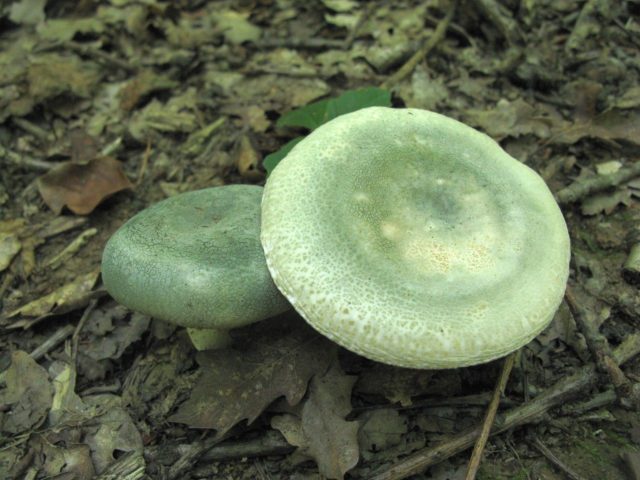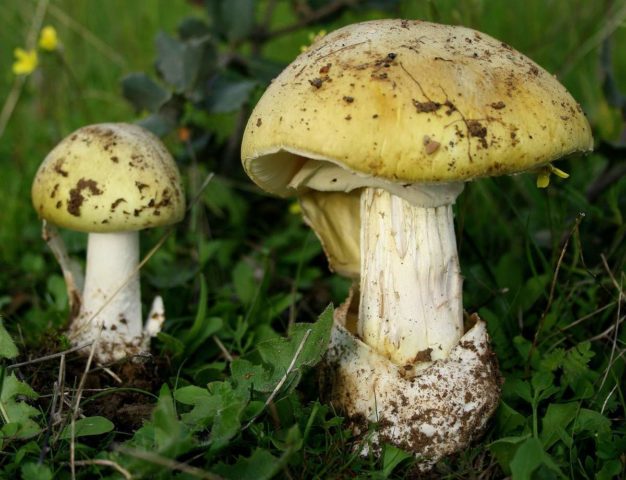Content
The russula family includes a large number of varieties with all kinds of color and nutritional value. The greenish russula is an edible representative of the species with an unusual color and taste, which are fully revealed after heat treatment.
Where greenish russules grow
The distribution area of the greenish russula in Russia is the Far East, the Urals, the Central part, Siberia. There is a greenish russula in the forests near Moscow and near St. Petersburg. The variety is quite common and popular among mushroom pickers.
Prefers to grow on acidic soils of coniferous, mixed or deciduous forests. Single specimens can often be found in an open meadow under birch trees. Does not grow in families of 2-3 pcs., Is rare. The mycelium is located mainly under a coniferous or leafy cushion; on mosses, a greenish russula is a rare phenomenon. For her, a moderately humid environment is better than a waterlogged place in the shade.
What greenish russules look like
During the entire period of growth, the greenish russula practically does not change color; the greenish color in a mature specimen is diluted with white areas in the form of a grid with various cell sizes. According to the characteristic pattern on the surface of the cap, the mushroom is also called the scaly russula.
The external characteristics are as follows:
- The cap is greenish, in a young mushroom a tone darker than in a mature one. The shape is rounded, sloping, with a slight depression in the center. The edges are even or slightly toothed, concave inward in young specimens; at the old edge, the caps are often raised upward. Diameter - 15 cm. The protective film is slippery, sticky.
- Spore-bearing plates are large, rarely located, beige at the base, yellow to the edge of the cap. The controversial powder is white.
- The leg is thick, short, straight or curved. The surface is uneven, the structure is solid, dense.
The flesh of the greenish mushroom is brittle, which complicates transportation during picking, tasteless, white, with a slight nutty smell.
Is it possible to eat greenish russula
Mushrooms of this species are classified in the 4th category according to suitability for consumption. The group includes conditionally edible specimens, greenish russules occupy a leading position in nutritional value among the family. They have a good taste and a pleasant delicate aroma, do not contain toxins. The chemical composition is very diverse, all substances are in one way or another useful for humans.
Mushroom taste
In raw fruit bodies, taste is weak, the pulp is fresh, the smell is barely perceptible. After boiling or frying, the gastronomic qualities of the greenish russula are significantly enhanced, as a result, a dish with a pleasant mushroom taste and nutty aroma is obtained.The fragile structure complicates the processing, the top film is easily removed, but the fruiting body requires careful handling.
Benefits and harm to the body
The greenish russula in nutritional value is not inferior to category 1 mushrooms. The product is non-nutritive, with a low glycemic level. Mushrooms are included in the diet of people who are overweight and high in blood sugar. The chemical composition of the fruiting body includes:
- Vitamins: nicotinic and ascorbic acid, riboflavin.
- Macro and microelements: calcium, phosphorus, magnesium, iron.
- The protein in the composition is 1.7 g, in structure it is not inferior to the protein of animal origin.
- Carbohydrates - within 1.5 g.
- Fat - 0.8 g.
Substances are completely preserved after processing and participate in the work of almost all body systems:
- lecithins are a building material for the cell membrane, improve the condition of the liver, blood vessels, prevent the appearance of cholesterol formations;
- fiber participates in the work of the digestive tract, acts as an absorbent, removes toxins and toxins;
- riboflavin stabilizes the emotional background, relieves irritation, overstrain;
- immunostimulants increase the body's resistance to infection;
- sterols in the composition stimulate the endocrine system, increase testosterone production, which is important for men;
- iron is involved in hematopoiesis, increases the hemoglobin index.
It is not recommended to eat mushrooms:
- women during pregnancy and lactation;
- children under 5 years old;
- people with an allergic reaction to the constituent elements.
False doubles
The greenish russula has no officially recognized false double. But depending on the composition of the soil and lighting, the greenish color of the cap may be less or more intense. At first glance, the mushroom looks like a toadstool.
This type of fly agaric is the same size as the greenish mushroom, and also has scales on the surface. If the russula has a section on the cap in the form of a pattern, then in the fly agaric the fragments are convex, easily separated from the surface. The shape is rounded, without a depression in the center. The species differ in the structure of the fruit stem: the poisonous mushroom has a ring at the top, the greenish russula does not. The smell of a poisonous representative is sharp, specific, repulsive.
Another similarity is not in favor of the greenish russula with the pale toadstool - the most toxic fungus in nature.
Here the similarity is more pronounced than with fly agarics, since the latter in a light color is a rare phenomenon, mainly this species with a red cap. But toadstool pale can be dark yellow, lemon or greenish. The structure of mushrooms is outwardly similar: the same sloping shape, a depression in the center.
Distinguish between poisonous and edible specimens according to the upper protective layer: in the toadstool it is dry, without a pattern, monophonic. According to the structure of the leg, the pale grebe grows from the fruit egg, which remains for the entire period of growth and, like the fly agaric, has a ring in the upper part. The smell of the poisonous mushroom is sugary, sweet.
Collection rules
The greenish russula is harvested from July to the end of September; the duration of the autumn season depends on precipitation. They take mushrooms only in an ecologically clean area. Located greenish russula near landfills, gas stations or in the vicinity of chemical plants absorb and accumulate heavy metals from the soil and air, become toxic. And it is also not recommended to pick mushrooms on the sides of highways, exhaust gases completely reduce the nutritional value of the mushroom, the composition contains carcinogens.
Use
Greenish russula are the most delicious and popular among their family. Mushrooms can be:
- add to soup;
- fry with potatoes and onions;
- stew with vegetables;
- bake with sour cream and cheese;
- use as a filling for baking.
Greenish russula are dried. Freeze boiled and raw.It will not work to salt the mushrooms, there is a small amount of water in the fruit body, and the recipe provides for the use of oppression, the greenish russula will not be able to maintain its integrity. You can marinate mushrooms, but the subtle aroma and taste are interrupted by the spices.
Conclusion
Greenish russula is a conditionally edible mushroom of the 4th category. The mushroom was assigned to the last group because of the fresh taste and faint odor in its raw state. The gastronomic quality is enhanced only after heat treatment. This variety is popular with mushroom pickers, russula is the most delicious and versatile in processing.













